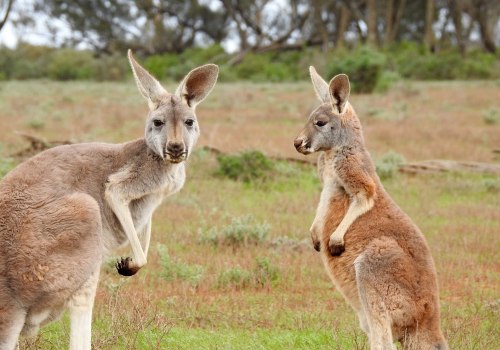Welcome to our article on Didgeridoo Playing, a unique and mesmerizing aspect of Indigenous Australian culture. As you delve into the world of this ancient instrument, you will discover the captivating sounds and rich history behind it. Whether you are a music enthusiast or simply curious about different cultures, this article will also explore how debt consolidation loans can help you finance your own Didgeridoo and continue the tradition of playing this instrument. Traditionally, Didgeridoos were played by Aboriginal men as part of cultural ceremonies and rituals. However, in recent years, the instrument has gained popularity all over the world, with people from different backgrounds incorporating it into their music and performances.
It is said that the Didgeridoo's powerful vibrations have healing properties, making it not only a musical instrument but also a tool for spiritual connection. In this article, we will explore the origins of Didgeridoo Playing, its significance in Indigenous culture, and the techniques used to create its iconic sound. We will also discuss its modern-day uses and how it has evolved into a popular instrument in contemporary music. So, sit back, relax, and let us take you on a journey through the enchanting world of Didgeridoo Playing. The Didgeridoo is a unique musical instrument that has been an integral part of Indigenous Australian culture for centuries.
Also known as a Yidaki, it is a long wooden trumpet-like instrument made from hollowed-out tree trunks. Its origins can be traced back to Northern Australia, where it was first used by the Aboriginal people as a tool for hunting and communicating with the spiritual world. In Indigenous Australian society, the Didgeridoo holds a significant role in ceremonies and rituals. It is believed to have the power to connect the living with the spirit world and is often played during important cultural events such as initiation ceremonies, funerals, and harvest celebrations. The sound of the Didgeridoo is also thought to have healing properties and is used in traditional medicine practices. There are several types of Didgeridoos, each with its own unique sound and purpose.
The most common type is the traditional Didgeridoo made from eucalyptus or bamboo. However, there are also Didgeridoos made from termite-hollowed branches and even PVC pipes. The process of making a Didgeridoo involves carefully selecting and shaping the wood, as well as decorating it with intricate designs and symbols that hold special meanings in Indigenous culture. Playing the Didgeridoo requires a combination of techniques that require skill and practice to master. The most well-known technique is circular breathing, where the player continuously breathes in through their nose while simultaneously pushing air out through their mouth into the instrument.
This allows for long, uninterrupted notes to be played, creating a hypnotic sound that is synonymous with the Didgeridoo. Another important aspect of playing the instrument is vocalization, where players use their vocal cords to produce different sounds and tones while playing. The Didgeridoo has deep spiritual and cultural significance in Indigenous Australian culture. It is believed to represent the voice of the earth and the ancestors and is often used in ceremonies to connect with the spirit world. The Didgeridoo is also closely tied to the Dreamtime, the creation period in Indigenous belief, and is used to tell stories and pass down cultural knowledge from generation to generation. In conclusion, the Didgeridoo is not just a musical instrument but a symbol of Indigenous Australian culture and spirituality.
Its history, techniques, and cultural significance make it a fascinating subject for anyone interested in experiencing Australian culture or learning about Indigenous traditions. Through this article, we hope to have provided a comprehensive understanding of the Didgeridoo and its place in Indigenous culture.
The History of the Didgeridoo
The Didgeridoo is an iconic instrument that holds a special place in Indigenous Australian culture. Its origins can be traced back over 1500 years ago, making it one of the oldest woodwind instruments in the world. However, the exact origins of the Didgeridoo are still debated among experts. Some believe that the Didgeridoo was created by the Yolngu people of Arnhem Land, while others believe it was introduced to Australia by Southeast Asian traders.Regardless of its origins, the Didgeridoo has evolved and adapted over time, becoming an integral part of Indigenous Australian culture.
Cultural Significance
The Didgeridoo is not just a musical instrument, but a deeply spiritual and culturally significant one in Indigenous Australian culture. Its importance can be traced back thousands of years, and its playing is often tied to traditional ceremonies and rituals. For Indigenous Australians, the Didgeridoo is seen as a way to connect with their ancestors and the spirit world. It is believed that the deep, resonating sound of the instrument has the power to cleanse and heal the soul. This spiritual significance is why it is often referred to as a 'dreamtime' instrument, as it is used in dreamtime stories and beliefs. In addition to its spiritual importance, the Didgeridoo also holds cultural significance.It is used as a way to pass down stories, traditions, and cultural knowledge from generation to generation. The playing of the Didgeridoo is often accompanied by singing, dancing, and storytelling, making it a multifaceted form of cultural expression. The Didgeridoo also plays a crucial role in Indigenous Australian identity. It is a symbol of their culture and heritage, and its unique sound has become synonymous with Australia itself. As the instrument gains popularity around the world, it serves as a way to share and preserve Indigenous culture and traditions.
Types of Didgeridoos
Didgeridoo playing is an ancient art that has been passed down through generations in Indigenous Australian culture.As a result, there are various types of didgeridoos that have been crafted by different communities over time. Each type has its own unique characteristics and playing style, making it a fascinating instrument to learn about. The most common type of didgeridoo is the Eucalyptus didgeridoo, also known as the traditional or classical didgeridoo. These are made from hollowed out eucalyptus tree branches and are typically around 4 feet in length. They produce a deep, resonant sound and are often decorated with intricate designs that hold cultural significance.
Bamboo
didgeridoos have gained popularity in recent years due to their affordability and ease of transport.They are made from bamboo shoots and are usually shorter than traditional didgeridoos, ranging from 2-3 feet in length. While they produce a slightly higher pitched sound compared to eucalyptus didgeridoos, they are still able to create a rich and vibrant tone.
Yidaki
or Yolngu didgeridoos are crafted by the Yolngu people in Arnhem Land, Northern Territory. They are made from termite-hollowed branches of stringybark trees and are known for their intricate designs and spiritual significance. These didgeridoos are traditionally played during sacred ceremonies and hold great cultural importance. The process of making a didgeridoo varies depending on the type and the maker.However, it typically involves finding a suitable tree branch, hollowing it out, and then decorating it with traditional symbols and patterns. Some modern didgeridoos may also be made from materials such as plastic or metal. Whether you are interested in learning to play the didgeridoo or simply want to appreciate its cultural significance, understanding the different types of didgeridoos is a great way to gain a deeper appreciation for this unique instrument.
Playing Techniques
Playing Techniques: Didgeridoo playing is not just about blowing into a hollowed-out tree trunk. It requires skill and technique to produce the distinct sounds and rhythms that make this instrument so mesmerizing. In this section, we will explore some of the techniques used in playing the Didgeridoo.Circular Breathing:
One of the most important techniques in Didgeridoo playing is circular breathing.This technique allows the player to continuously blow air into the instrument while inhaling through their nose at the same time. This creates a continuous sound without any breaks or pauses, giving the impression of a never-ending drone.
Vocalization:
Another important technique is vocalization, which involves using the voice to create different tones and sounds while playing the Didgeridoo. This can include humming, growling, and even singing into the instrument, adding a unique layer of complexity to the music.Embellishments:
The Didgeridoo is not just a monotone instrument. Skilled players use various embellishments to add depth and texture to their playing.These can include tongue rolls, lip buzzing, and vocal clicks, all of which require precise control and coordination.
The Rhythmic Breath:
The rhythmic breath is another technique that is commonly used in Didgeridoo playing. This involves controlling the intensity and speed of one's breath to create different rhythms and patterns. It adds a dynamic element to the music and allows for improvisation during performances.Finger Movement:
While most of the focus is on the player's breath and vocalizations, finger movement also plays a role in creating different sounds on the Didgeridoo. By covering and uncovering the end of the instrument with their fingers, players can change the pitch and add percussive effects to their playing. These are just some of the techniques used in playing the Didgeridoo, and each player may have their own unique style and approach.Through practice and dedication, one can master these techniques and create truly mesmerizing music on this ancient instrument. In conclusion, Didgeridoo playing is not just a form of music, but a way of life for Indigenous Australians. It is a powerful symbol of their culture and traditions, and has gained global recognition as a unique and fascinating instrument. We hope this article has provided you with a deeper understanding and appreciation for the art of Didgeridoo playing.







